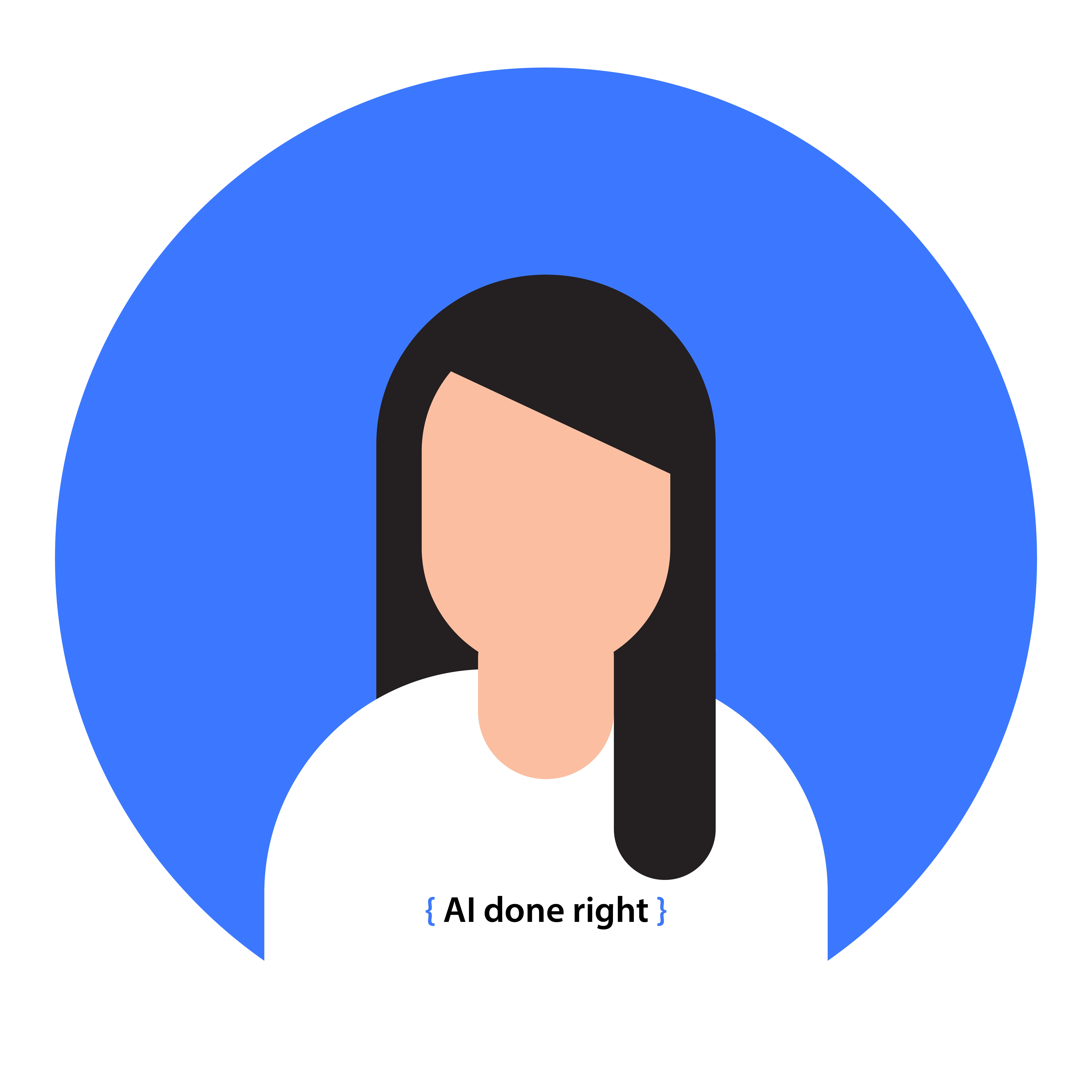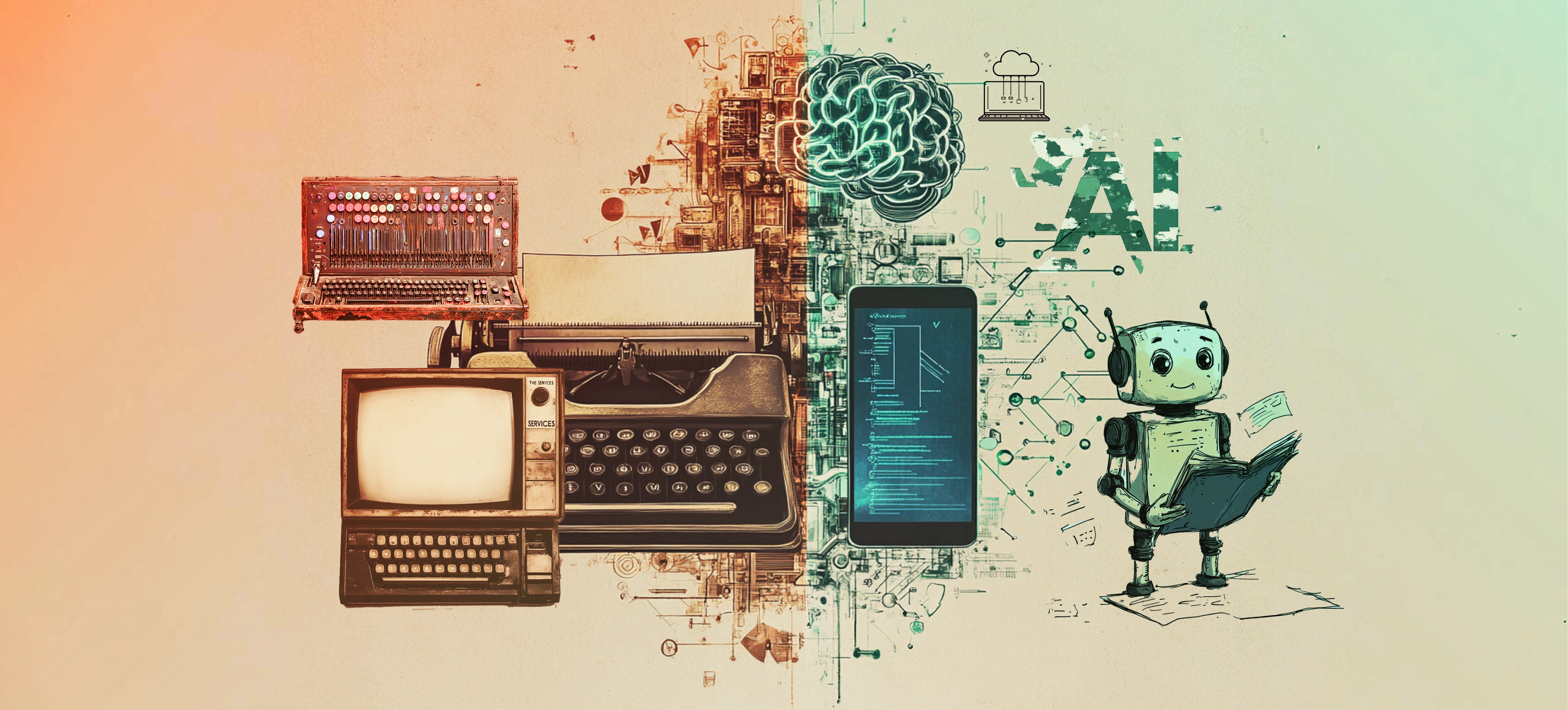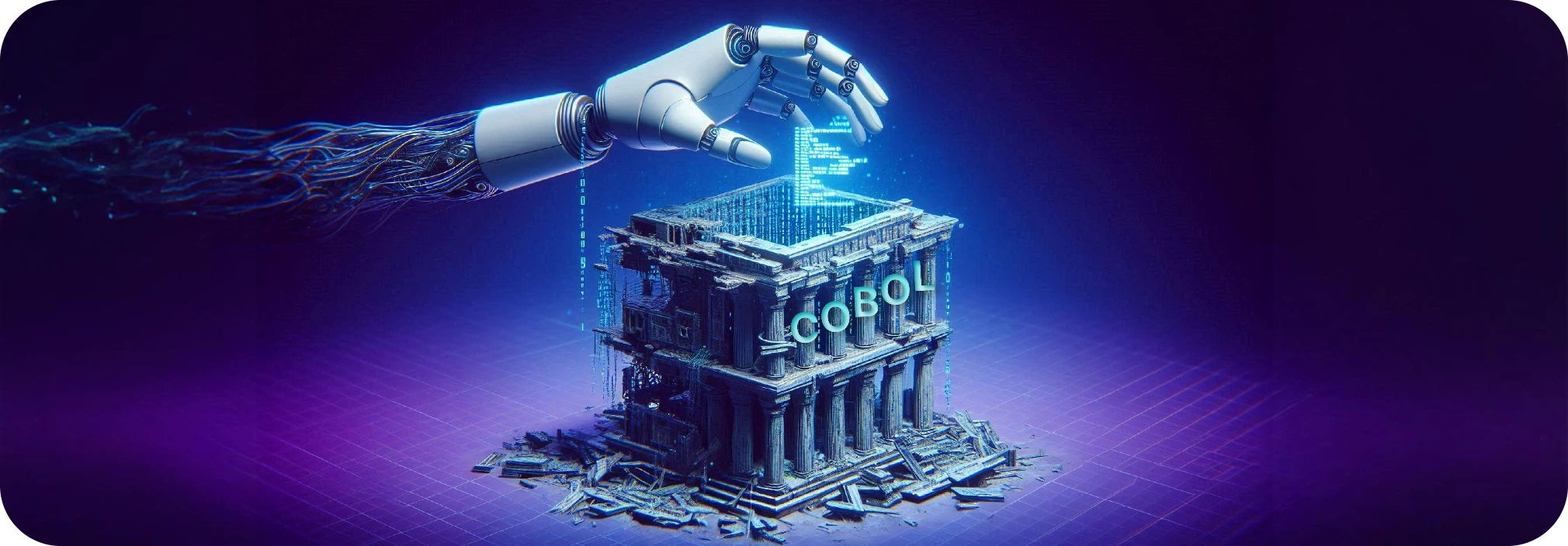Have you ever imagined a situation where your IT ops manager urgently calls in the middle of the night—the whole mainframe has crashed, and millions in transactions are stalled. The culprit? A COBOL (Common Business-Oriented Language)-based legacy system that’s been the backbone of your business for decades. Sound familiar?
This is exactly what happened at a major U.S. bank in 2023, resulting in a 12-hour outage that cost them millions and eroded customer trust. And they’re not alone.
Did you know 43% of banking systems still run on COBOL? Or that 95% of ATM transactions rely on COBOL code from decades ago? But here’s the real concern: What happens when the last COBOL expert retires?
Outdated systems are more than just a risk—they’re unsustainable. Rising maintenance costs, security threats, and emergency fixes are adding up fast. How long can your company afford this?
The answer lies in solutions like our AppMod.AI. An AI-powered modernization platform with which you can seamlessly convert your legacy COBOL systems to modern languages, preserve your business logic, and conduct a risk-free transition.
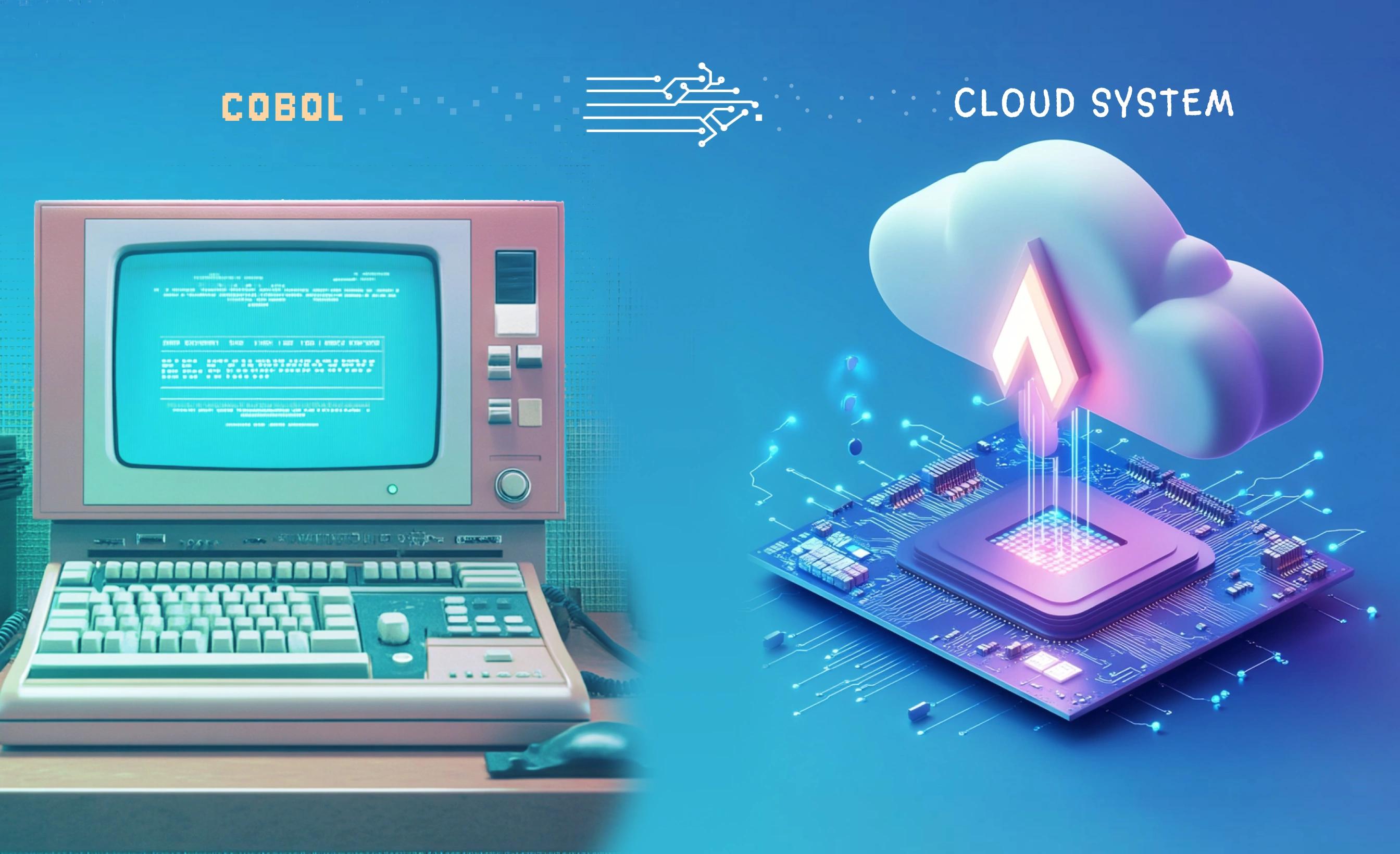
Old COBOL transforming into modern cloud systems
The Hidden Crisis Beneath Digital Transformation
Every single day, an astronomical $3 trillion in transactions pulses through the veins of our financial infrastructure, all orchestrated by COBOL (Common Business-Oriented Language) systems.
While we’re all focused on the latest technologies like Kubernetes and GraphQL, this 60-year-old language quietly handles the core operations that keep the economy going.
A recent warning came from the 2020 New Jersey unemployment crisis. When COVID-19 caused unemployment claims to surge, their IBM mainframe-based systems, which rely on COBOL/CICS applications and IMS DB, were pushed to the brink.
The state had to publicly ask for COBOL programmers to help fix issues with the outdated systems and navigate complexities like EBCDIC (Extended Binary Coded Decimal Interchange Code).
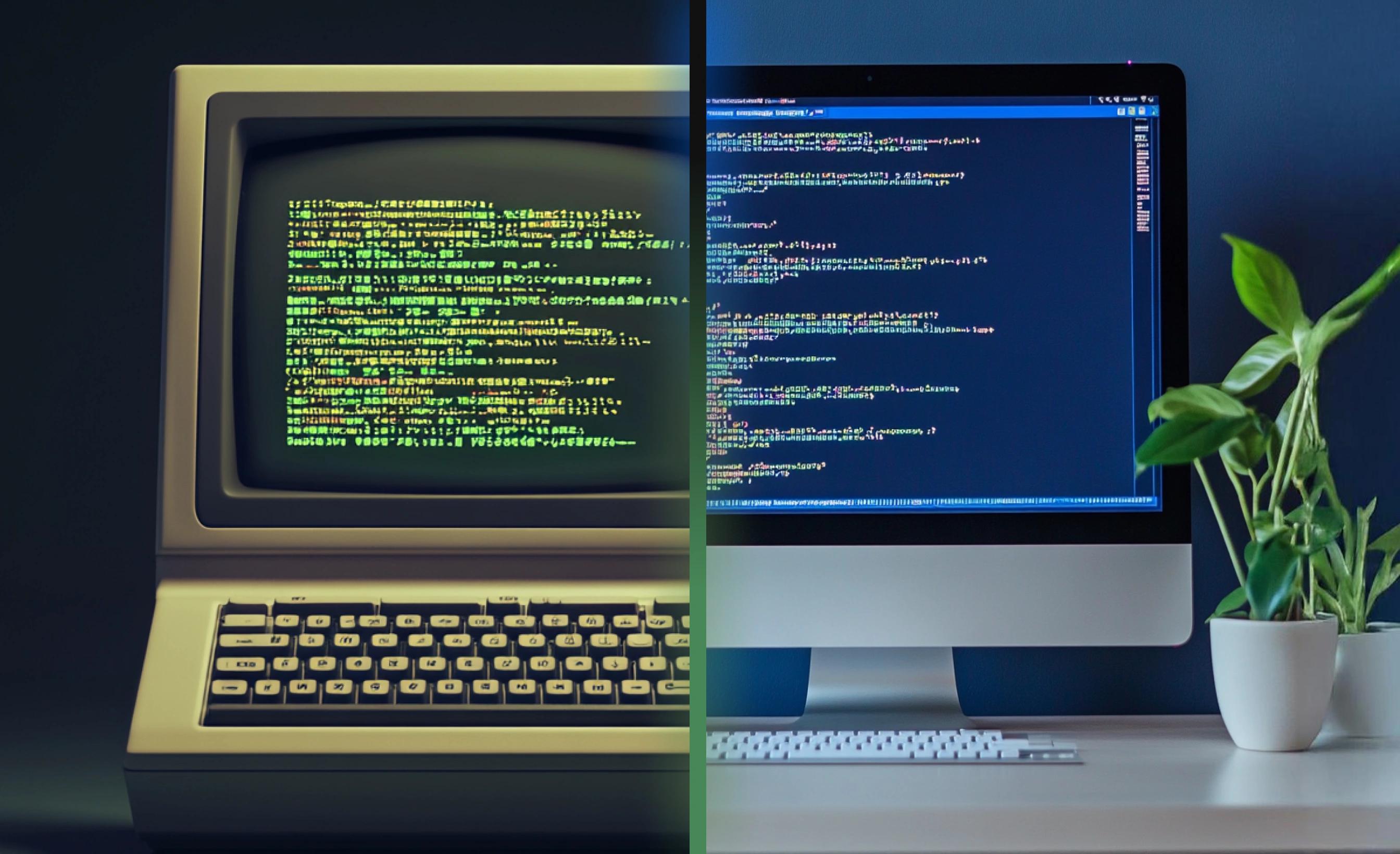
Digital transformation - COBOL code vs modern code
Let's digest some numbers that keep CTOs awake at night:
- A staggering 95% of ATM swipes trigger COBOL transactions, processing everything from balance inquiries to fund transfers through ancient but reliable batch processing systems.
- 43% of banking cores still run on COBOL, managing critical ACID-compliant transactions through systems that were architected when Apollo 11 landed on the moon
- 80% of face-to-face transactions touch COBOL at some point, often through complex CICS transaction routing and DB2 database calls.
- The world runs on 220 billion lines of COBOL code, much of it undocumented and poorly understood by modern development teams.
Your enterprise might be running mission-critical COBOL applications right now – perhaps handling your general ledger through VSAM files, or processing payroll through intricate COBOL copybooks.
AI-Driven COBOL Modernization: Revolutionizing Legacy System Transformation
Let’s think about this for a moment—a wake-up call from the Commonwealth Bank of Australia in 2018. Their COBOL-based payment system faced a catastrophic failure, leaving thousands of businesses unable to process salary payments.
The aftermath? Millions spent on emergency fixes and significant reputational damage.
But here’s where the story takes an interesting turn: AI is now bridging the gap between your legacy systems and modern tech. With AppMod.AI, we transform your COBOL-based systems into modern, scalable solutions—3x faster than traditional methods.
AppMod.AI preserves your business logic, works alongside your team, and ensures a seamless, risk-free transition. Let’s read into how it is revolutionizing COBOL modernization.
1. Automated Code Understanding and Documentation
Legacy systems often pose significant challenges: high maintenance costs, outdated codebases, and a shrinking pool of skilled developers—making modernization a complex and time-consuming process. Techolution’s AppMod.AI addresses these issues with AI-powered automation, transforming code understanding and documentation into seamless, efficient workflows.
By using advanced tools like Code Conversion, Project Analyzer, and Code Refactoring, AppMod.AI automates dependency mapping, optimizes legacy code, and accelerates modernization. It delivers 90% accuracy in real-time code reviews, reduces manual effort by 80%, and speeds up project analysis by 70%.
2. Intelligent Code Migration
Now, let’s talk about AI's role in intelligent code migration, an area that is reshaping how organizations update their legacy codebases. Companies like Modern Systems (now Advanced) are using AI to automate the migration of COBOL to modern programming languages such as Java and C#.
For instance, they worked with a major U.S. healthcare provider to convert over 8.5 million lines of COBOL code into Java with a staggering 99.5% accuracy. This process, which traditionally required years of manual coding and testing, was completed in months saving both time and substantial development costs.
3. Pattern Recognition and Optimization
Here’s something interesting: AI isn't just about translating or migrating code; it's also about optimizing it. The Commonwealth Bank of Australia, once again, turned to AI for a deeper analysis of their COBOL systems. Using advanced AI tools, they conducted a thorough analysis of transaction patterns across their legacy systems.
The result? AI identified redundant processes that had been running for decades—unnecessary operations that were inflating maintenance costs and system inefficiencies. By eliminating these redundant processes, the bank achieved a 15% improvement in overall system performance and saved millions in ongoing maintenance costs.
In all these cases, AI not only accelerated the modernization of COBOL systems but also introduced a new level of intelligence to the process.
Are You Ready to Future-Proof Your Core Systems?
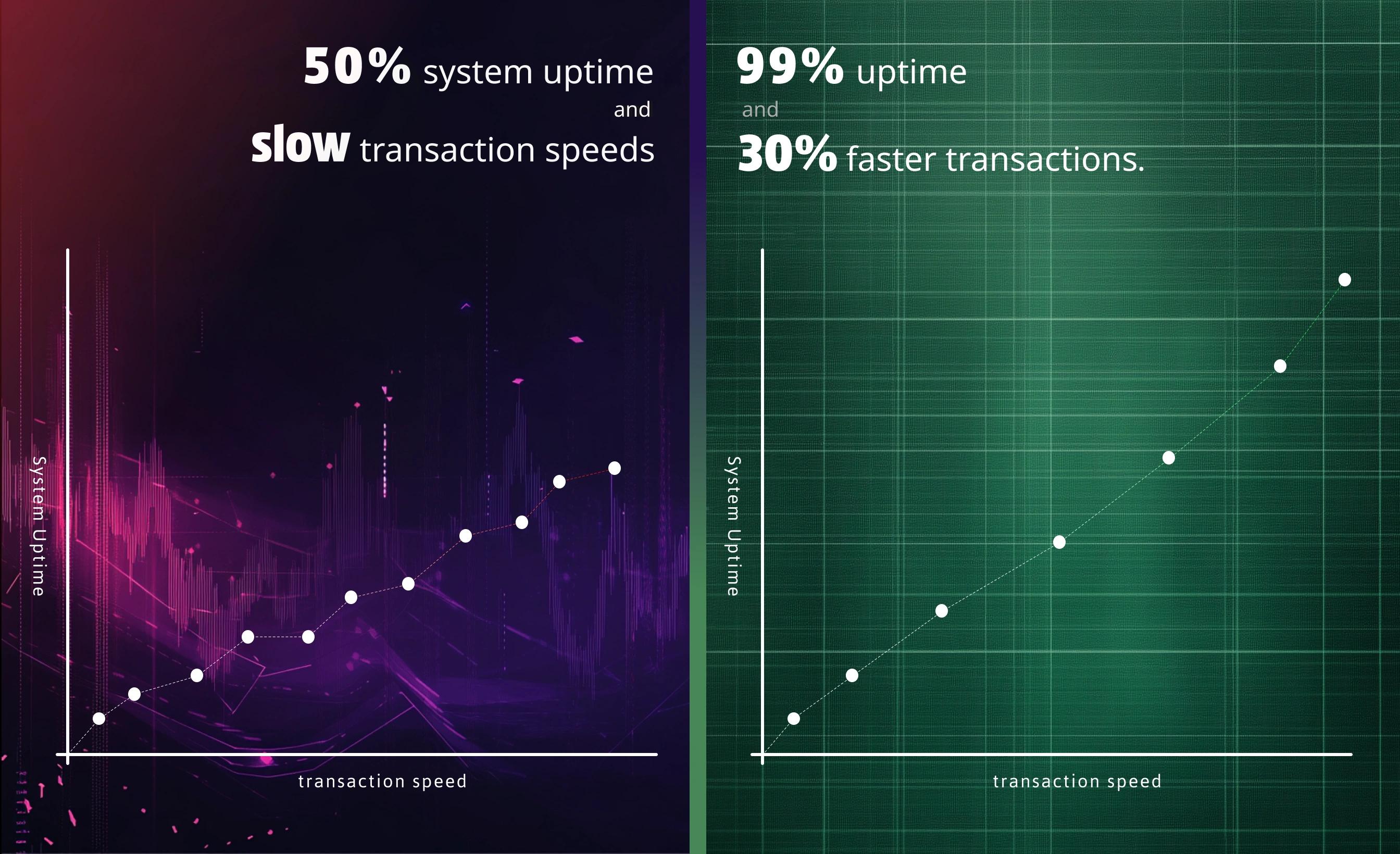
Digital transformation - COBOL code vs modern code
Let’s talk about what forward-thinking organizations are already doing and why acting now isn’t optional.
Step 1: Assessment and Planning—Do You Really Know Your Dependencies?
Imagine discovering that 40% of your COBOL systems aren’t as critical as you thought—freeing up resources and simplifying your modernization roadmap. That’s exactly what happened when a major European bank deployed AI-driven dependency mapping tools. These tools used static and dynamic code analysis to expose redundant processes and streamline their strategy.
Step 2: Pilot Programs—Why Take Unnecessary Risks?
Have you ever thought about how you test AI-assisted modernization without putting mission-critical systems at risk? The Australian Tax Office started small, piloting AI refactoring tools on non-critical reporting systems first. They tested compatibility with RESTful APIs, containerized architectures, and CI/CD pipelines before scaling modernization efforts to core infrastructure.
Step 3: Hybrid Approaches—Modernize Without Breaking What Works
For many organizations, a rip-and-replace strategy is simply not an option. The United Nations Development Programme (UNDP) took a hybrid approach, using APIs and middleware layers to keep critical COBOL systems operational while modernizing others piece by piece.
Looking Ahead to the Next Five Years
As 90% of COBOL programmers retire by 2025, an estimated 50% of government agencies will face major challenges in maintaining critical systems. AI-powered solutions are already transforming legacy systems by enabling automated code conversion to modern languages, creating digital twins for risk-free testing, and generating real-time documentation to preserve institutional knowledge.

Summing Up
The shift to COBOL modernization is already happening—right now. While some are still talking about it, you could be taking the leap and reaping the rewards. AI is no longer a concept of the future; it's revolutionizing the way legacy systems operate—faster, smarter, and more cost-effectively than ever before.
Don’t wait for the future to catch up. The technology is proven, the benefits are real, and your competitors are likely already making the move. So, will you lead the change, or follow behind?
Let’s not waste another minute. At Techolution, we’re ready to help you modernize seamlessly, ensuring your systems are built to thrive for more than just the next decade. Act now, before someone else takes your place at the forefront of innovation! Let’s Talk!
